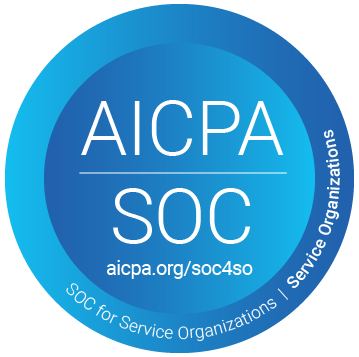Why Insurance Compliance Automation is Essential for Reducing Risk and Staying Ahead of Regulations

The Growing Need for Insurance Compliance Automation
Insurance compliance is more complex than ever. With evolving regulations, frequent policy changes, and heightened scrutiny, businesses must work harder to remain compliant. Traditional manual processes are no longer sustainable in such a dynamic environment—they’re time-consuming, error-prone, and expensive.
The solution? Insurance compliance automation.
Automating compliance processes enables organizations to reduce risks, streamline workflows, and ensure adherence to regulatory requirements. In this blog, we’ll explore the importance of insurance compliance automation, key benefits, and how organizations can adopt it to future-proof their operations.
The Challenges of Manual Compliance Management
- Increased Regulatory Complexity
Regulations in the insurance sector change frequently, and keeping up can overwhelm teams. Manual methods often lead to missed updates, resulting in penalties. - Time-Intensive Processes
Tracking policies, verifying compliance, and maintaining records manually are labor-intensive tasks that pull resources away from higher-value activities. - Higher Risk of Errors
Manual processes are prone to mistakes, whether it’s forgetting a deadline, misfiling a document, or failing to identify a regulatory change. These errors can lead to costly compliance violations. - Lack of Centralized Systems
When compliance data is stored in spreadsheets, emails, or disconnected systems, it becomes difficult to gain visibility into compliance status or prepare for audits efficiently.
How Insurance Compliance Automation Solves These Problems
Automation tools address the inefficiencies and risks of manual compliance management by introducing streamlined, technology-driven solutions:
- Real-Time Compliance Monitoring
Automated tools continuously monitor compliance statuses and alert you to any changes in regulatory requirements. This ensures you stay ahead of updates and avoid penalties. - Centralized Documentation
Store all compliance-related documents, such as policies, certificates, and audit trails, in a single digital repository. This simplifies access and organization, especially during audits. - Automated Alerts and Notifications
Compliance automation platforms send proactive alerts for renewal deadlines, regulatory changes, or missing documents, ensuring nothing falls through the cracks. - Seamless Integration with Existing Systems
Many automation tools integrate with systems like insurance management software, ERP platforms, and policy tracking tools, creating a unified compliance ecosystem. - Minimized Manual Intervention
By automating repetitive tasks such as document verification or policy tracking, businesses can reduce administrative workload and eliminate human error.
Benefits of Insurance Compliance Automation

COI management software automates and streamlines these tasks, enabling businesses to focus on core operations while maintaining compliance. Here’s how:
- Risk Mitigation
Automated tools help businesses identify compliance risks early and take corrective action, reducing the likelihood of penalties, fines, and lawsuits. - Increased Operational Efficiency
Automation allows compliance teams to focus on strategic initiatives rather than manual tasks, boosting overall productivity. - Cost Savings
By reducing errors, penalties, and time spent on manual compliance tasks, businesses save money in the long run. - Improved Audit Readiness
Centralized records and automated tracking make it easier to prepare for audits, reducing stress and improving outcomes. - Enhanced Scalability
As your business grows, compliance automation can handle increasing volumes of policies and regulatory requirements without adding complexity.
Real-World Examples of Compliance Automation Success
Case Study: Reducing Regulatory Risk in a Large Insurance Firm
A leading insurance firm faced difficulties tracking policy compliance across its sprawling vendor network. After implementing automation software:
- Regulatory Violations Dropped by 70%: Real-time monitoring and alerts reduced instances of non-compliance.
- Audit Time Cut in Half: Centralized documentation made audit preparation faster and easier.
Use Case: Small Business Streamlines Policy Compliance
A small insurance agency relied on spreadsheets to track policy renewals, which often led to missed deadlines. With compliance automation:
- Automated reminders ensured timely renewals.
- The business saved 15 hours per month on administrative tasks.
How to Implement Insurance Compliance Automation
Step 1: Assess Your Needs
Identify areas where your current compliance processes fall short, such as monitoring, documentation, or tracking policy renewals.
Step 2: Research the Right Tools
Choose a solution that matches your needs, offering features like centralized documentation, real-time monitoring, and automated alerts.
Step 3: Train Your Team
Ensure your compliance officers, legal teams, and other stakeholders are familiar with the software and its features.
Step 4: Monitor and Optimize
Regularly review compliance metrics provided by the tool to identify further areas for improvement.
Key Features to Look for in Compliance Automation Software
When selecting a compliance automation tool, prioritize these features:
- User-Friendly Interface: A simple, intuitive design ensures easy adoption.
- Customizable Alerts: Tailor notifications to match your organization’s needs.
- Advanced Reporting: Gain insights into compliance trends and identify risks.
- Integration Capabilities: Ensure the tool works seamlessly with your existing systems.
- Scalable Design: The software should grow with your business.
Industry Trends in Compliance Automation
- AI-Powered Compliance Solutions
Artificial intelligence is enhancing compliance tools with predictive analytics, allowing businesses to anticipate and mitigate risks before they arise. - Cloud-Based Platforms
Cloud-based compliance tools offer scalability, flexibility, and accessibility for businesses of all sizes. - Growing Adoption Across Industries
A recent report by Compliance Tech Trends shows that 60% of organizations plan to adopt compliance automation tools within the next two years to stay competitive.
Transform Your Compliance Processes Today
Insurance compliance doesn’t have to be a manual, error-prone process. With automation, you can streamline workflows, reduce risks, and stay ahead of regulations.
Take the first step today, schedule a free demo of SmartCompliance. Discover how our automated solutions can help your organization achieve seamless compliance and long-term success.


